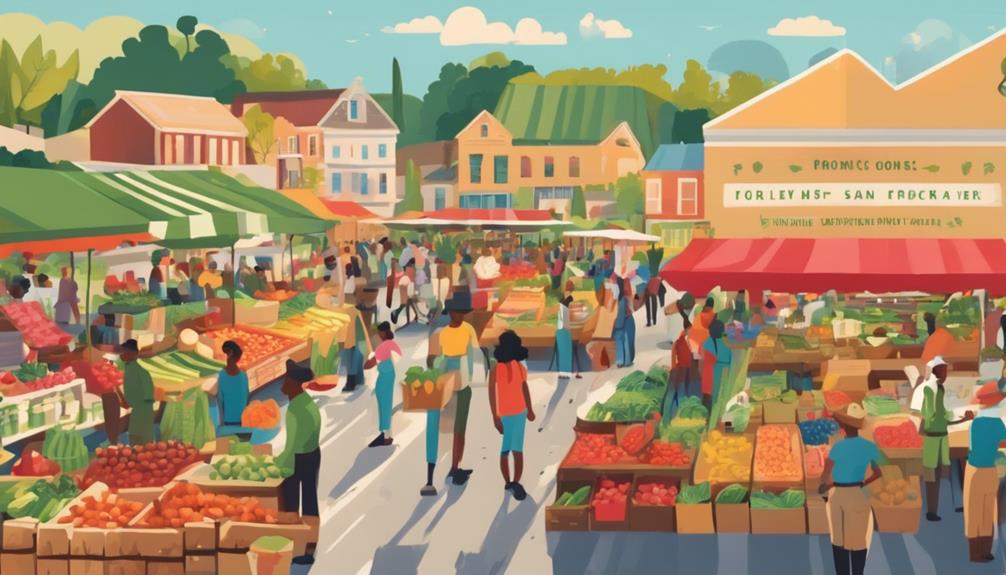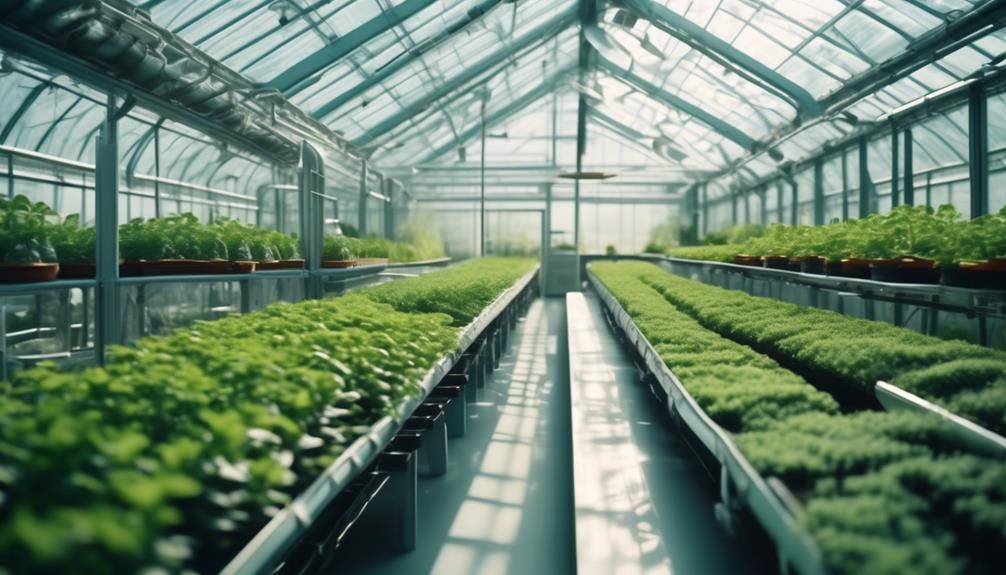Amazing Change In Public Perspective On GMO Food

You’ve probably seen how public views on Public Perspective On GMO Food have shifted over time. Initially developed to enhance food security, GMOs faced skepticism due to safety and ethical concerns. Advanced techniques like CRISPR are now changing perceptions by showcasing benefits like increased crop resilience and better nutrition. Although media and social platforms play significant roles in shaping opinions, regulatory initiatives aim for transparency and informed consumer choices. Education efforts are essential to bridge gaps in understanding. If you’re curious about the nuances in this ongoing debate, there’s much more to explore about GMOs and their impact on our food systems.
Historical Background of GMOs
The journey of genetically modified organisms (GMOs) began in the early 1970s, marking a significant milestone in agricultural science. At that time, scientists started to manipulate the genetic makeup of crops, leading to the first GMO—a bacterium engineered to produce insulin. This innovation was a pivotal moment in GMO history, reflecting the broader agricultural evolution that aimed to enhance food security.
As these technological innovations progressed, public sentiment around GMOs started to shift. While some embraced the potential for increased yields and pest resistance, others raised ethical considerations about the long-term effects on health and the environment. Cultural attitudes varied widely, with some regions welcoming GMOs while others remained skeptical or outright opposed.
Regulatory milestones followed, as governments began to establish frameworks to assess the safety and efficacy of GMOs. These regulations aimed to address public concerns and guarantee that GMOs were both safe for consumption and environmentally sustainable. Over the decades, the discourse surrounding GMOs has evolved, influenced by scientific advancements and changing perceptions, shaping the landscape of modern agriculture and food production.
Key Scientific Advancements
As public perspectives on GMOs evolved, scientific advancements played a pivotal role in shaping the conversation. You’ve likely noticed how gene editing techniques, like CRISPR, have revolutionized crop development. These innovations enhance crop resilience against climate change, ensuring sustainable agriculture practices that contribute to food security. With improved pest resistance, farmers can reduce reliance on chemical pesticides, making farming more environmentally friendly.
Yield improvement is another significant benefit of these advancements. By utilizing precision agriculture, you can optimize resource use and increase production without expanding farmland, addressing both hunger and environmental concerns. Nutritional enhancement of crops means that biofortified foods can provide essential vitamins and minerals, improving public health.
Scientific collaboration across disciplines has fueled these innovation trends, leading to breakthroughs that not only meet consumer demands but also support global agricultural sustainability. As you engage with the conversation around GMOs, it’s essential to recognize how these key scientific advancements are paving the way for a more resilient and secure food system. By understanding the science behind these innovations, you can better appreciate their potential to transform agriculture for the better.
Public Health Perspectives
When it comes to GMO foods, safety and nutrition concerns often top the list of public health discussions. You might wonder how regulatory standards and practices address these issues. Let’s explore what these regulations mean for your health and the food you eat.
Safety and Nutrition Concerns
Frequently, discussions around GMO food center on safety and nutrition concerns that affect public health. You might wonder about the health perceptions surrounding genetically modified organisms and how they impact your choices. Many people express apprehension about the long-term effects of consuming GMO foods, fearing they could pose health risks. However, numerous studies indicate that GMO foods are safe to eat and undergo rigorous testing before reaching your plate.
On the flip side, nutritional benefits of GMO foods can’t be overlooked. These crops are often engineered to be more nutritious, providing essential vitamins and minerals that can help improve overall health. For instance, some GMOs have increased levels of beta-carotene, which can be particularly beneficial in regions where dietary deficiencies are common.
Regulatory Standards and Practices
Public health perspectives on GMO foods are heavily influenced by regulatory standards and practices that govern their development and approval. You should be aware that these regulations often prioritize labeling transparency, allowing consumers to make informed choices. However, compliance challenges arise as countries adopt different global standards, leading to confusion and potential trade implications.
Risk assessment plays a significant role in establishing safety evaluations for GMO products. Regulatory evolution has led to improved enforcement mechanisms, ensuring that GMO foods meet established safety criteria before they enter the market. This process is often bolstered by international agreements that harmonize standards across borders, promoting a safer global food supply.
Consumer advocacy groups push for stricter regulations and better labeling, arguing that transparency fosters trust in the food system. As public sentiment around GMOs shifts, you might notice increased pressure on policymakers to adapt regulations in response to evolving consumer concerns. Ultimately, balancing safety, compliance, and consumer preferences is essential for maintaining public health while maneuvering through the complexities of GMO food regulation. Understanding these dynamics will empower you to engage more effectively in discussions about GMO foods and their place in our diets.
Environmental Concerns
When you think about GMO crops, it’s crucial to reflect on their ecological impact. These modifications can affect local biodiversity and alter ecosystems in ways that aren’t always immediately clear. Understanding these factors helps you form a more balanced view of how GMOs fit into our environment.
Ecological Impact Assessments
Ecological impact assessments play an essential role in evaluating the potential environmental consequences of genetically modified organisms (GMOs). These assessments help you understand how GMOs might affect ecological balance and the long-term sustainability of agricultural practices. By employing sustainability metrics, you can gauge the implications of GMOs on soil health, pest management, and gene flow.
When conducting a risk assessment, it’s vital to monitor the effects on ecosystem services, such as pollination and water filtration. Environmental monitoring allows you to track changes over time, ensuring that any unintended consequences are identified early. For instance, implementing crop rotation can enhance soil health and reduce the risks associated with GMO crops.
As you analyze the effects of GMOs, consider how they interact with natural ecosystems and whether they disrupt existing ecological relationships. By focusing on ecological impact assessments, you can make informed decisions that prioritize both agricultural efficiency and environmental responsibility. Ultimately, these assessments foster a deeper understanding of how GMOs can be integrated sustainably into modern farming, balancing productivity with the preservation of the environment for future generations.
Biodiversity and GMO Crops
Biodiversity is at the heart of healthy ecosystems, and the introduction of GMO crops raises significant concerns about its preservation. When you consider the potential loss of crop diversity, it’s vital to understand the role genetic variation plays in ecosystem stability. By heavily relying on a few GMO varieties, you risk reducing the genetic pool necessary for agricultural resilience against pests and climate change.
Traditional farming has long prioritized diverse crops, nurturing healthy soil and promoting natural pest resistance. In contrast, monocultures often found in GMO farming can lead to soil degradation and diminished soil health. This loss can hinder your ability to adapt to climate variations, as diverse crops are generally more resilient and better at withstanding environmental stressors.
While GMO crops may enhance yields, they also pose risks to the ecosystem. By focusing on a narrow range of genetically modified plants, you may inadvertently create vulnerabilities within your agricultural systems. To maintain a sustainable future, it’s imperative to balance the benefits of GMOs with the need for biodiversity, ensuring that both agricultural and ecological health thrive together.
Media Influence on Perception
Media plays a vital role in shaping how you view GMO food. Through various media narratives, you’re exposed to differing opinions that influence your perceptions. Public campaigns often utilize emotional appeals and framing techniques to sway your thoughts, painting GMO foods in either a positive or negative light. Trust building is important here; when credible sources support GMO advancements, you may feel more inclined to accept them.
However, misinformation trends can cloud your judgment. You might encounter misleading information that sparks fear or skepticism about GMO safety. Celebrity endorsements can also play a considerable part in your perspective. When a well-known figure promotes or criticizes GMO foods, their influence can greatly impact your beliefs.
Grassroots movements and educational outreach efforts further shape your understanding. These initiatives aim to inform the public about the science behind GMOs, counteracting negative narratives that may prevail in mainstream media. As you navigate these complex messages, it’s vital to recognize how cultural perceptions and media portrayals can shape your views. Being aware of these influences can empower you to form your own educated opinion on GMO food.
The Role of Social Media
As you scroll through your social media feeds, you’re likely bombarded with a mix of information about GMO foods that can either inform or confuse you. Social media influence plays an essential role in shaping public perception, as platforms like Facebook, Twitter, and Instagram allow individuals to share opinions, articles, and personal experiences. This instant access to varying perspectives means you’re often exposed to both pro-GMO and anti-GMO sentiments.
Public engagement on these platforms can sway opinions rapidly. When a post goes viral, it can lead to widespread discussions and debates, making it important for you to critically evaluate the sources of information. Misinformation can spread just as quickly, complicating your understanding of GMO foods and their benefits or risks.
Moreover, social media allows for direct interaction with experts and advocates, giving you the opportunity to ask questions and seek clarification. This dynamic creates a space for dialogue that wasn’t as accessible before. Ultimately, your understanding of GMO foods can be considerably shaped by what you see and share online, making it essential to navigate this digital landscape with care.
Regulatory Frameworks
Many people might not realize how complex the regulatory frameworks surrounding GMO foods are. These frameworks vary widely across countries, reflecting different agricultural policies and international regulations. In the U.S., for example, the FDA, USDA, and EPA each play a role in overseeing GMO products, but their approaches can be inconsistent.
GMO labeling is a hot topic, as it relates directly to consumer rights and transparency measures. You might wonder how your choices are influenced by these regulations. If you want to support ethical considerations in agriculture, knowing how your food is regulated will help you make informed decisions.
Public trust hinges on transparency; when consumers feel informed about what’s in their food, they’re more likely to accept GMO products. Understanding market dynamics is vital, as regulatory decisions can shift consumer perceptions and influence demand.
As the dialogue surrounding GMOs evolves, it’s important to stay updated on changes to regulations. By being aware of these frameworks, you can advocate for better consumer rights and guarantee that ethical considerations remain a priority in food production.
Consumer Education Initiatives
Understanding regulatory frameworks is just the starting point; consumer education initiatives play a vital role in shaping public perception of GMO foods. You might not realize it, but engaging in consumer workshops and public seminars can greatly enhance your understanding of GMOs. These educational campaigns often feature expert panels that clarify misconceptions and promote transparency initiatives.
Outreach programs are essential for fostering community engagement. They provide information resources that help you navigate the complexities of GMO foods, addressing your concerns directly. By integrating GMO topics into school curricula, children and teens can learn about biotechnology, ensuring that future generations are well-informed.
Farmer education also plays a key role in these initiatives. When farmers are educated about GMOs, they can share accurate information with consumers, bridging the gap between producers and the public. Through these collaborative efforts, you can become part of a movement that encourages informed decision-making regarding food choices.
Ultimately, these consumer education initiatives empower you to engage thoughtfully with GMO foods, paving the way for a more informed and open dialogue within society.
Future Outlook on GMOs
The future outlook on GMOs holds significant promise, as advancements in biotechnology continue to evolve. You’ll likely see emerging technologies that enhance the nutritional value of crops and improve their resistance to pests and diseases. These innovations can help meet the growing global food demand while minimizing the environmental impact of agriculture.
Public engagement will play an essential role in shaping this future. As you become more informed about the benefits and safety of GMOs, your perspective may shift. Transparency in how these technologies are developed and implemented will build trust, fostering a more positive public dialogue.
With increased collaboration between scientists, farmers, and consumers, you can expect more tailored solutions to food security challenges. As these conversations evolve, regulatory frameworks will also adapt, ensuring that GMOs are safe and beneficial.
In this way, the future of GMOs isn’t just about the technology itself but how you, as a consumer, interact with and influence the industry. By embracing these advancements and participating in discussions, you’ll contribute to a more sustainable food system that meets everyone’s needs.
Public Perspective On GMO Food; Frequently Asked Questions
How Do GMOS Affect Food Prices for Consumers?
GMO pricing can greatly influence food prices for you as a consumer. Lower production costs often lead to reduced retail prices, but your perception of GMOs might affect your willingness to buy these products.
What Are Common Misconceptions About GMO Labeling?
You might think GMO labeling guarantees accuracy, but misinformation sources often mislead. Regulatory differences can confuse consumer awareness, leading to unfounded health concerns and exaggerated claims about environmental impact that don’t reflect reality.
Can GMOS Contribute to Food Security in Developing Countries?
Yes, GMOs can greatly enhance food security in developing countries by offering benefits like crop resilience, nutritional enhancement, and agricultural sustainability, ultimately driving economic empowerment and fostering food innovation for healthier, thriving communities.
Are There Any Cultural Attitudes Towards GMOS Globally?
You’ll find that cultural beliefs about GMOs vary widely across countries. In some regions, people embrace biotechnology for food security, while in others, skepticism prevails, reflecting global comparisons in attitudes toward science and technology in agriculture.
How Do Personal Experiences Shape Opinions on Gmos?
Your personal experiences greatly shape your opinions on GMOs. When you encounter emotional narratives or personal anecdotes, they influence your beliefs, leading you to embrace or reject certain ideas based on how they resonate with your life.
Conclusion
As you explore the changing public perspective on GMOs, it’s clear that education and communication play essential roles in shaping opinions. While scientific advancements can alleviate concerns, it’s imperative to address public health and environmental worries effectively. The influence of media and social platforms cannot be overlooked, as they shape narratives around GMOs. By fostering open dialogue and transparency, we can pave the way for a more informed future where GMOs are understood and accepted by all.








